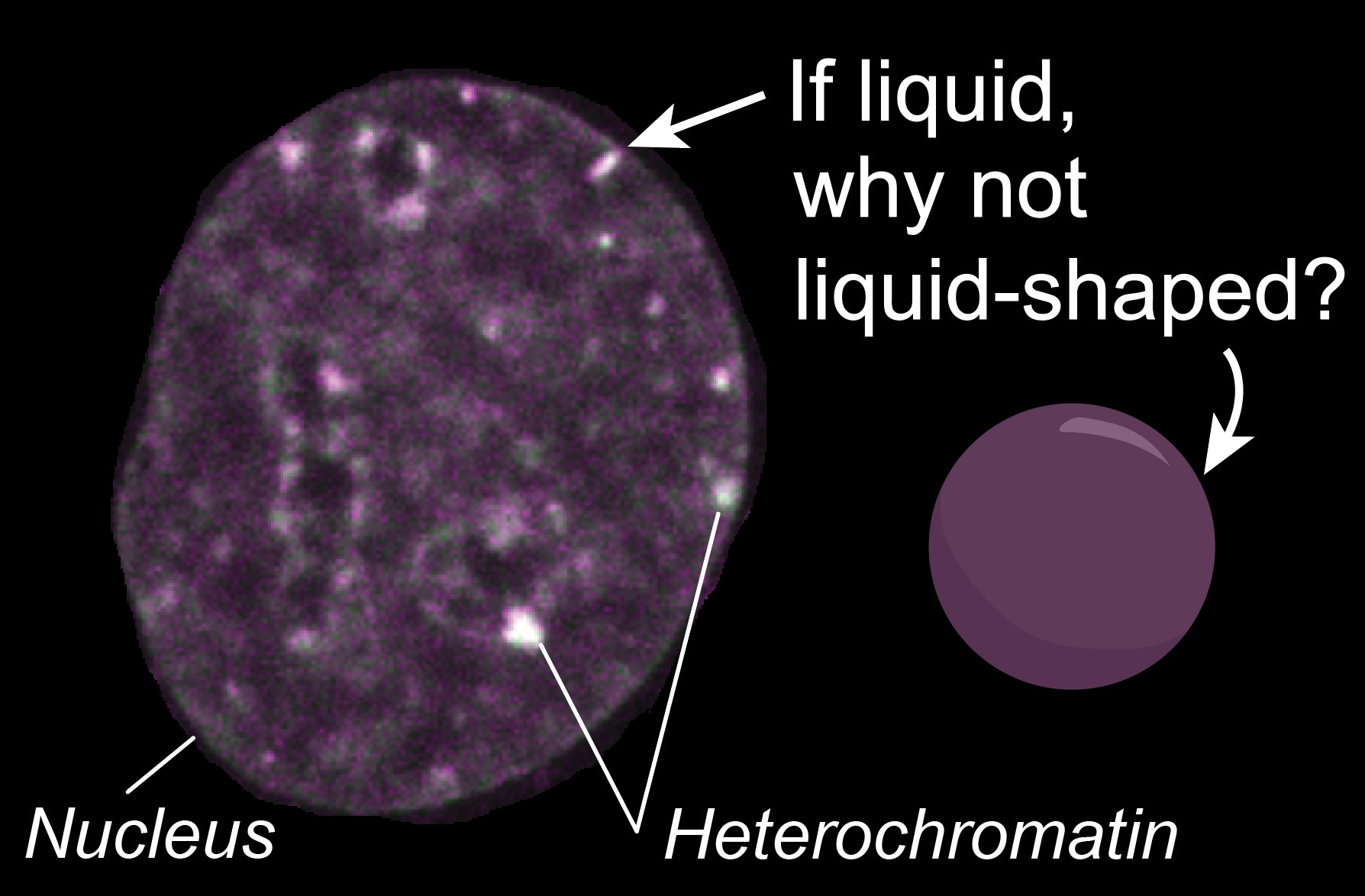If heterochromatin is really a liquid-like condensate, why is it not spherical?
We investigated whether mechanical interactions between a condensate and a fiber network can explain the variety of morphologies seen in phase-separated nuclear compartments
https://www.biorxiv.org/content/10.1101/2025.06.12.659369v1
We investigated whether mechanical interactions between a condensate and a fiber network can explain the variety of morphologies seen in phase-separated nuclear compartments
https://www.biorxiv.org/content/10.1101/2025.06.12.659369v1

Comments
Nonwetting condensates in flexible networks cavitate and exclude fibers, while wetting condensates engulf and bundle them. Stiff networks inhibit growth.
Stiffness arises from chromatin density, while wetting is controlled by the strength and extent of chromatin binding, with heterochromatic protein HP1alpha’s chromodomain providing strong wetting
Surface tension and stiffness– not just binding affinity or location– shape genome structure.
Elastocapillarity offers a physical basis for mesoscale nuclear morphology, with implications for gene regulation and disease.